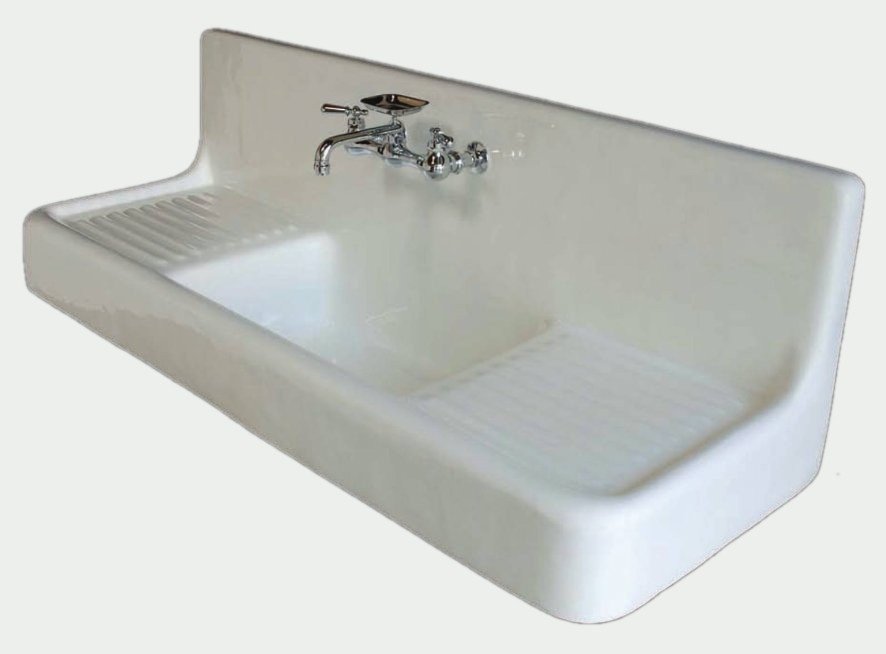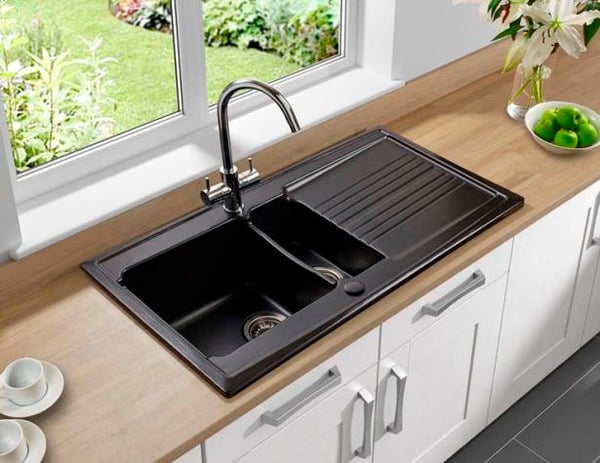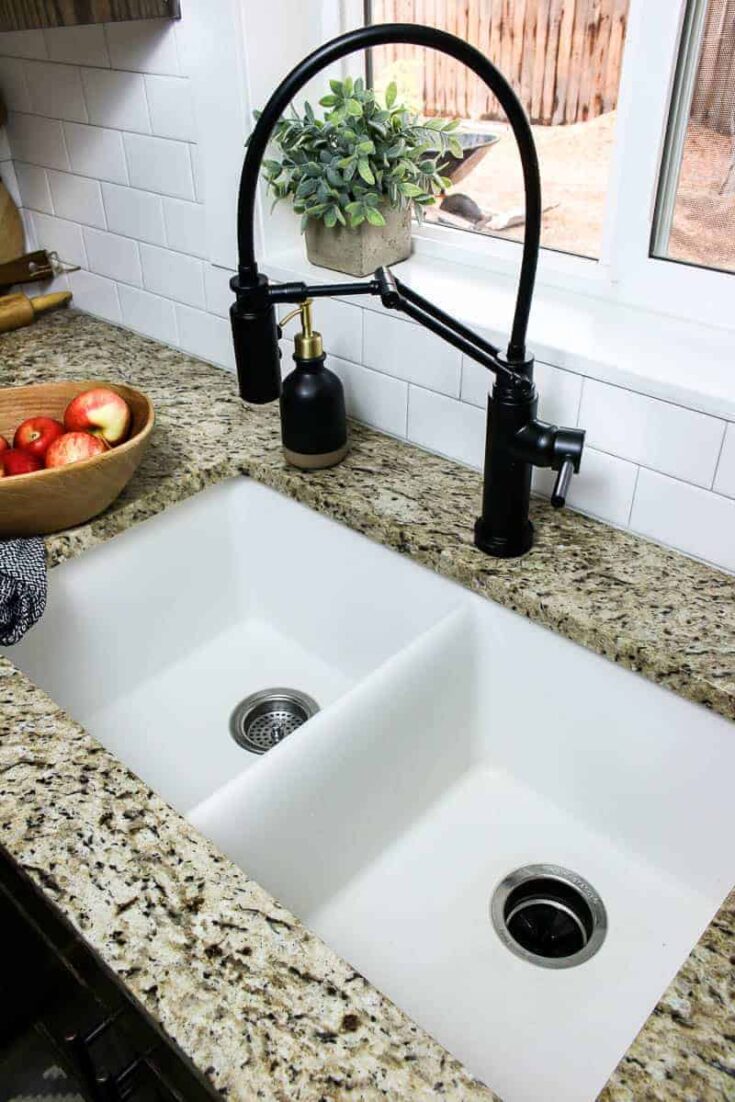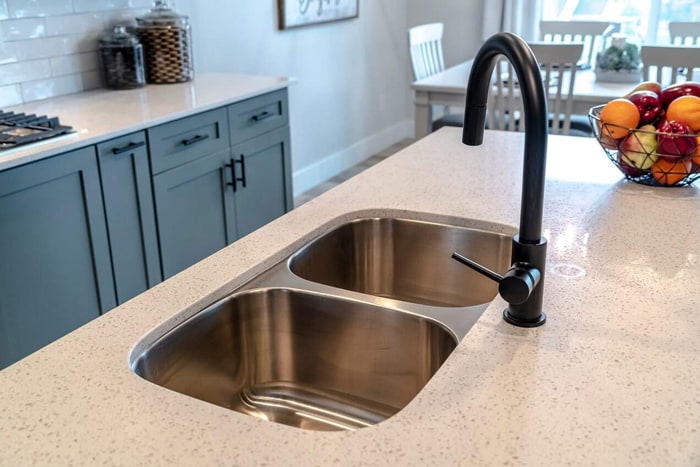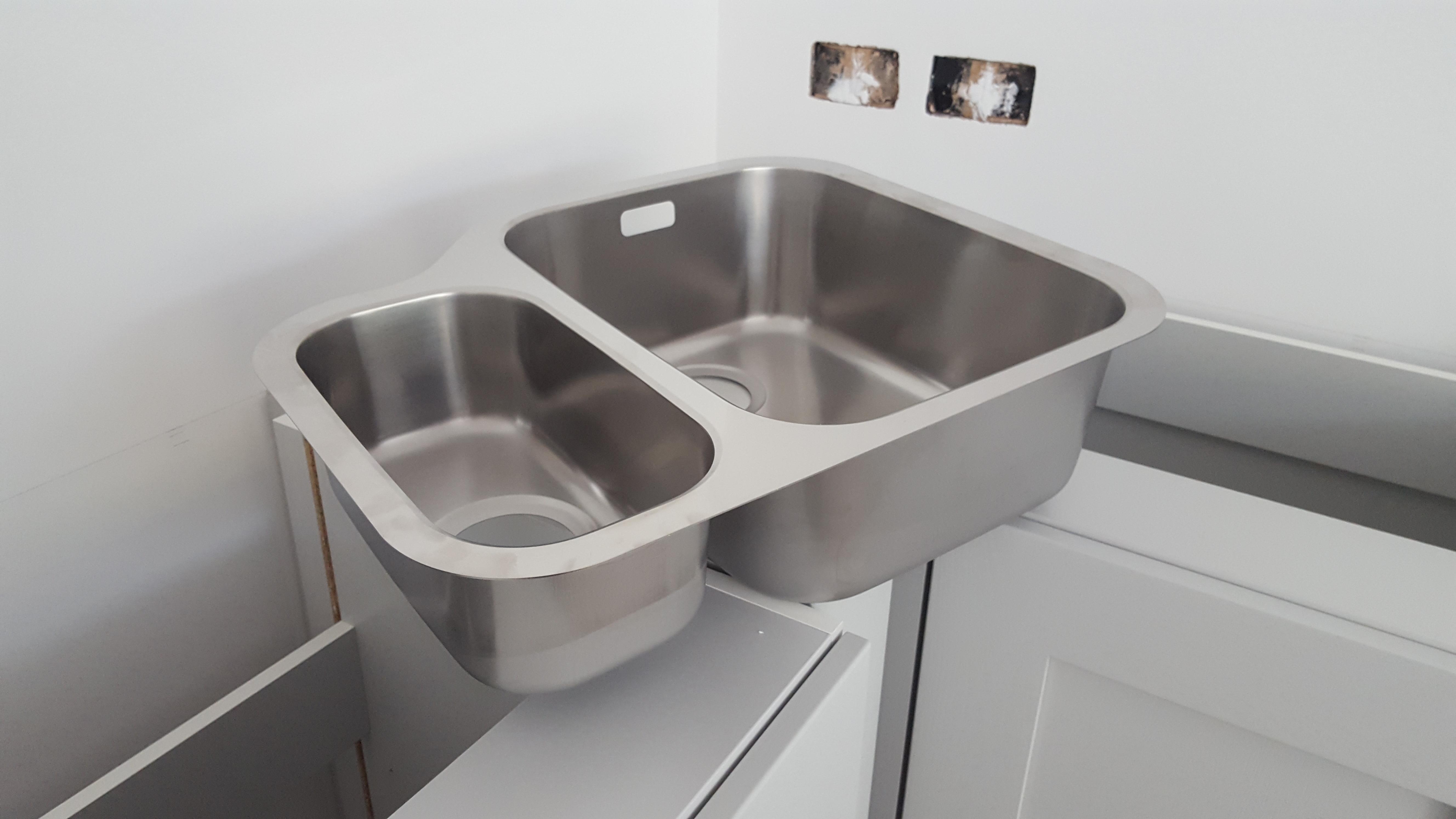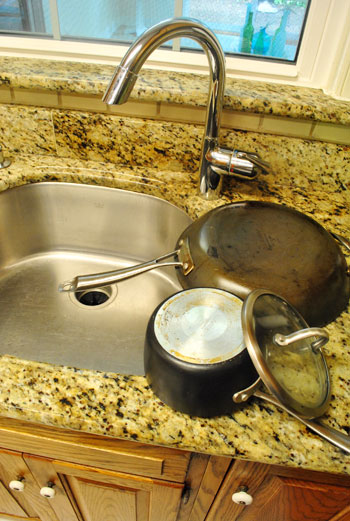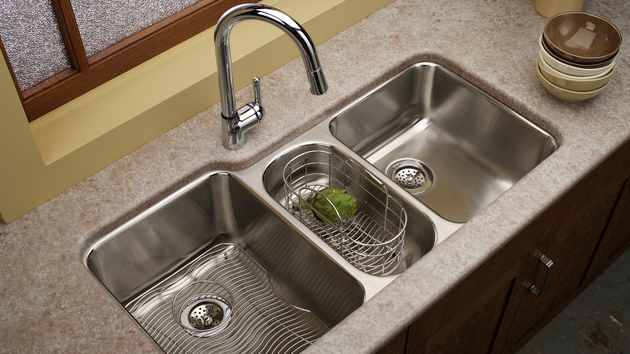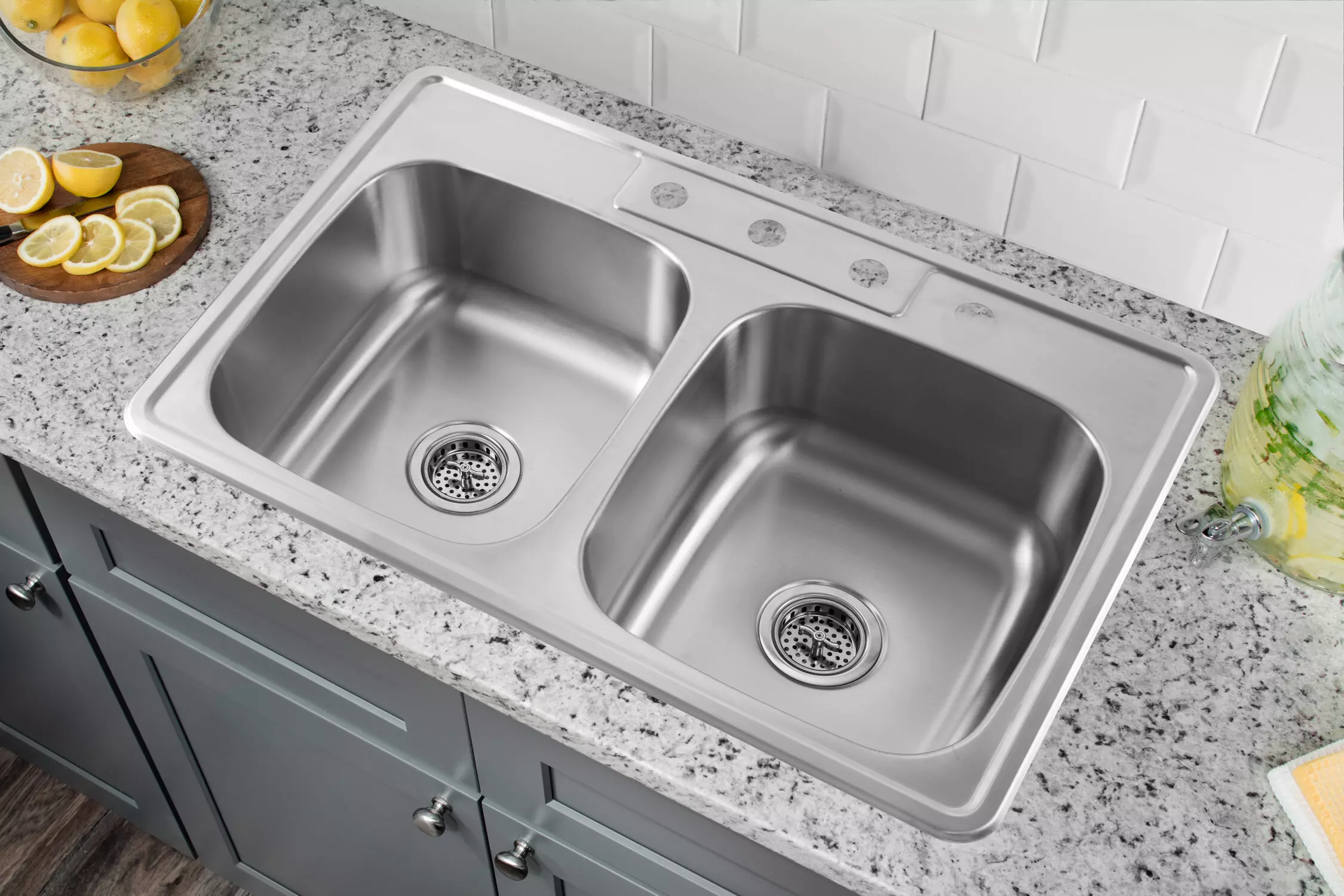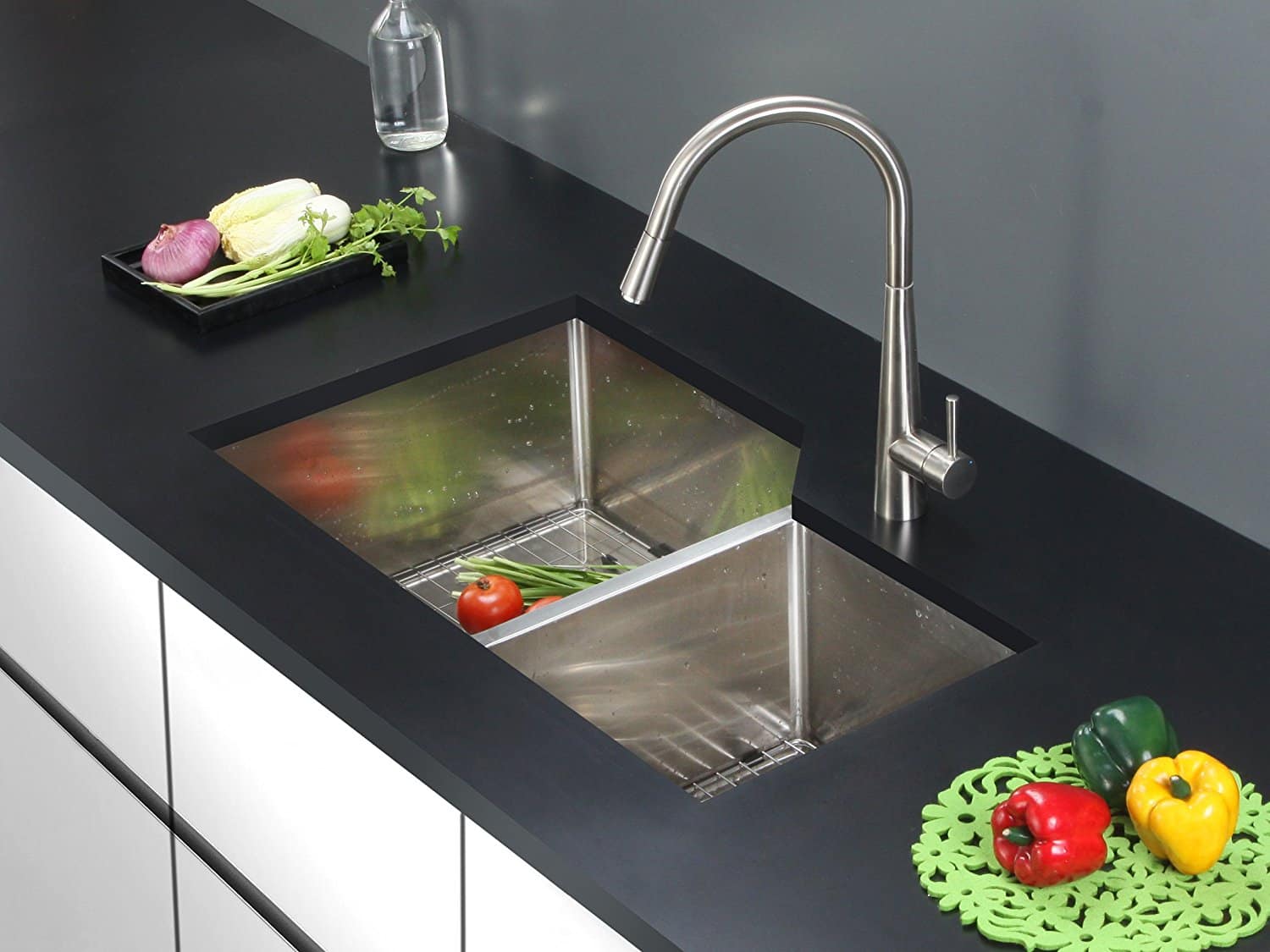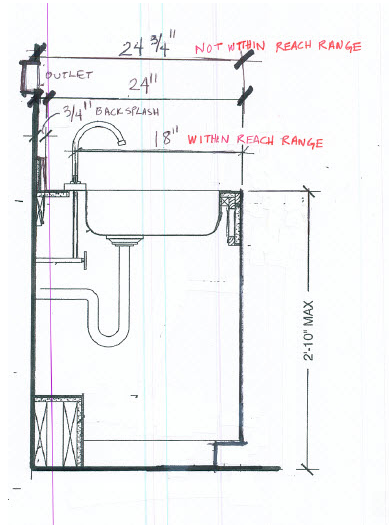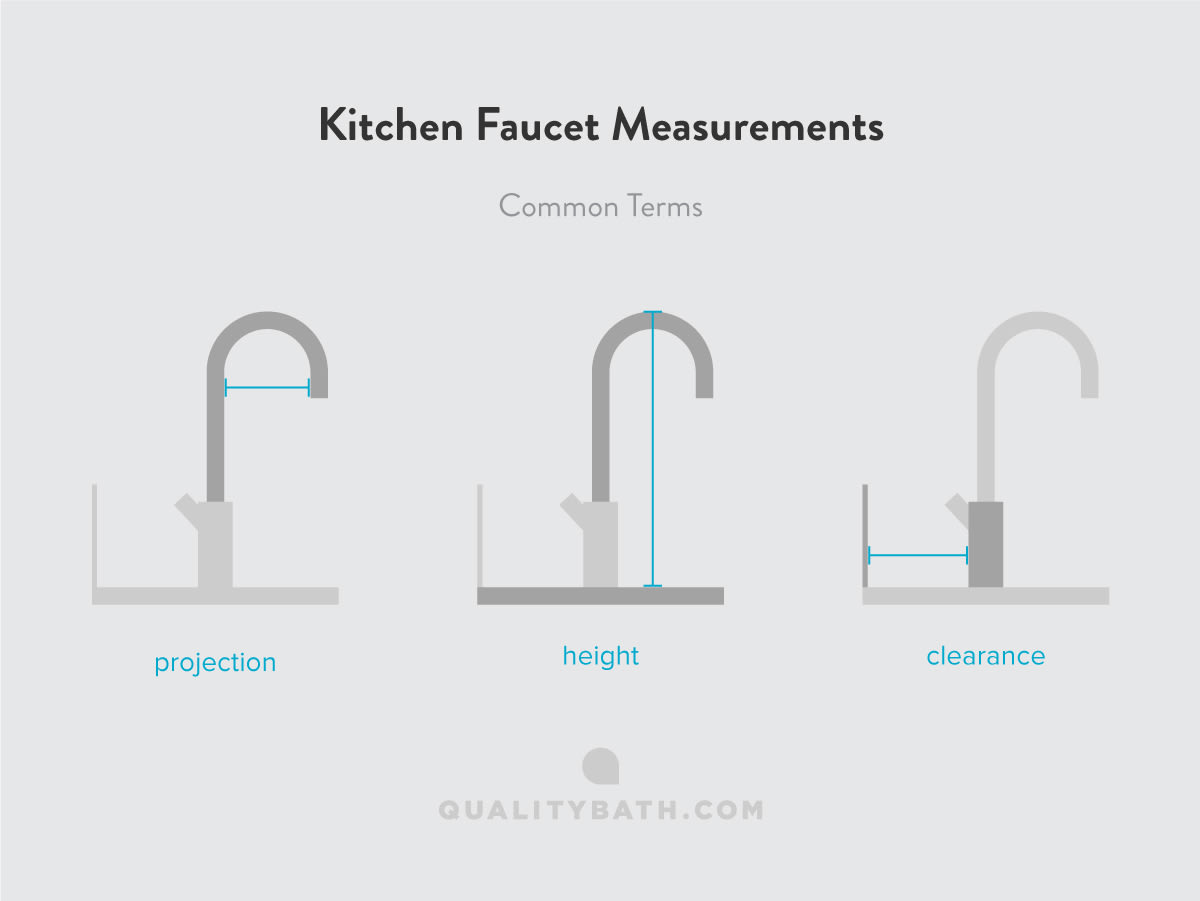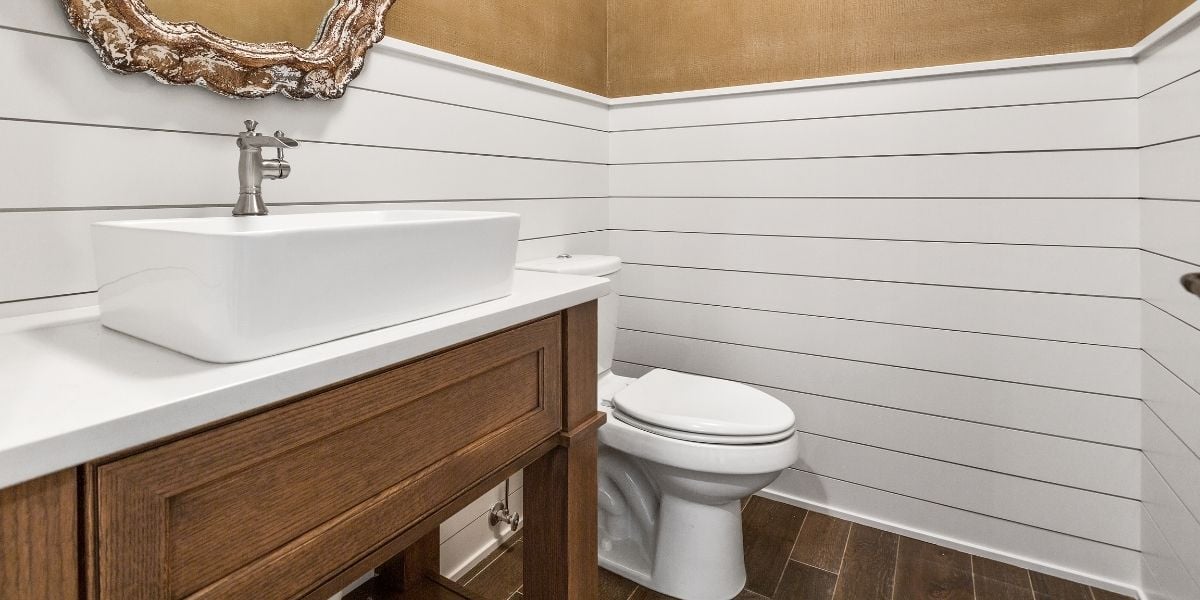If you're planning to remodel your kitchen, one of the most important things to consider is the sink. Not only does it serve as a functional element, but it also adds to the overall aesthetic of the space. When choosing a sink for your kitchen, it's essential to keep in mind the size requirements to ensure it fits well in your designated area. When it comes to sink size for the kitchen, there are a few factors to consider, such as the overall layout and design of your kitchen, as well as your personal preferences. Here are the top 10 sink size requirements you need to keep in mind when choosing the perfect sink for your kitchen.Sink Size Requirements for Kitchen
The standard sink dimensions for the kitchen can vary, but the most common sizes are between 22-30 inches in length and 12-25 inches in width. These dimensions are suitable for most kitchens and are a good starting point when looking for a sink. However, keep in mind that these are just standard sizes and may not work for all kitchen layouts. If you have a larger kitchen, you may want to consider a bigger sink to accommodate your needs. On the other hand, if you have a smaller kitchen, you may need to opt for a smaller sink to save on counter space.Standard Sink Dimensions for Kitchen
The minimum sink size for a kitchen is typically 24 inches in length and 18 inches in width. However, this may not be sufficient for all your needs, especially if you have a larger family or frequently entertain guests. It's always best to consider your personal needs and the amount of space you have available when determining the minimum size for your kitchen sink.Minimum Sink Size for Kitchen
The recommended sink depth for a kitchen is between 8-10 inches. This depth is ideal for everyday use and can accommodate most types of dishes, pots, and pans. However, if you need a deeper sink for larger dishes or to prevent splashback, you may want to consider a sink with a depth of 12 inches or more.Recommended Sink Depth for Kitchen
The placement of your sink is crucial to the overall functionality and flow of your kitchen. Ideally, the sink should be placed near the dishwasher and refrigerator for easy access to water and storage. It should also be placed near the cooking area to make meal preparation more convenient. Additionally, the sink should be placed in a central location, so it's easily accessible from all sides. This will make it easier to use the sink for multiple tasks simultaneously, such as washing dishes while someone else is preparing food.Sink Placement Guidelines for Kitchen
When it comes to sink materials, there are many options to choose from, including stainless steel, granite composite, porcelain, and more. Each material has its own pros and cons, so it's important to consider your needs and preferences when making a decision. For example, stainless steel sinks are durable and easy to clean, but they can scratch easily. On the other hand, granite composite sinks are more resistant to scratches, but they may be more expensive. It's important to weigh the pros and cons of each material and choose one that best suits your lifestyle.Sink Material Options for Kitchen
If you're looking for a sink with a built-in drying area, then a drainboard sink may be the perfect option for you. Drainboard sinks typically have a section next to the sink that is slightly sloped to allow water to drain and dry dishes. When considering a drainboard sink, make sure to take into account the added space requirements and ensure it fits well in your kitchen's layout.Drainboard Sink Requirements for Kitchen
An undermount sink is installed underneath the countertop, creating a clean and seamless look. This type of sink is becoming increasingly popular in modern kitchens, but it's important to keep in mind the added requirements for installation. Undermount sinks typically require a solid and sturdy countertop material, such as granite or quartz, to support the weight of the sink.Undermount Sink Requirements for Kitchen
If you have a large family or frequently entertain guests, a double sink may be a great option for your kitchen. Double sinks allow for easier multitasking, such as washing dishes on one side while preparing food on the other. However, keep in mind that double sinks will require a larger space and may not be suitable for smaller kitchens.Double Sink Requirements for Kitchen
The height of your sink faucet is another important consideration when choosing a sink for your kitchen. The faucet should be tall enough to accommodate larger dishes and pots, but not too tall that it causes splashing. The average height for a kitchen sink faucet is between 8-12 inches, but you may want to go higher if you have a deeper sink. Overall, choosing the right sink for your kitchen requires careful consideration of various factors, such as size, placement, material, and more. By keeping these top 10 sink requirements in mind, you can ensure that your sink not only meets your functional needs but also enhances the overall design of your kitchen.Sink Faucet Height Requirements for Kitchen
Sink Requirements for a Functional and Stylish Kitchen

Optimize Space and Functionality
 The kitchen is often considered the heart of the home, and the sink is an essential component of this space. Not only does it provide a practical function for washing dishes and food preparation, but it also adds to the overall design and aesthetic of the kitchen. When designing or renovating a kitchen, it's important to consider the
optimal placement and size of the sink
.
One of the main things to consider is the
work triangle
, which refers to the distance between the sink, stove, and refrigerator. This triangle should be designed to minimize the distance between the three points, making it more efficient for cooking and cleaning tasks. The sink should also be placed near the
preparation area
and have ample counter space on either side for easy access and functionality.
The kitchen is often considered the heart of the home, and the sink is an essential component of this space. Not only does it provide a practical function for washing dishes and food preparation, but it also adds to the overall design and aesthetic of the kitchen. When designing or renovating a kitchen, it's important to consider the
optimal placement and size of the sink
.
One of the main things to consider is the
work triangle
, which refers to the distance between the sink, stove, and refrigerator. This triangle should be designed to minimize the distance between the three points, making it more efficient for cooking and cleaning tasks. The sink should also be placed near the
preparation area
and have ample counter space on either side for easy access and functionality.
Choose the Right Sink
 When it comes to choosing a sink, there are several options available, including
top mount, undermount, and farmhouse sinks
. Top mount sinks are the most common and easiest to install, as they are dropped into a hole cut into the countertop. Undermount sinks are installed underneath the countertop for a seamless look, but they require professional installation and are typically more expensive. Farmhouse sinks, also known as apron front sinks, are becoming increasingly popular for their
rustic and charming design
.
Aside from the style, it's also important to consider the
size and depth
of the sink. A larger sink with a deeper basin can make it easier to wash larger pots and pans, but it may take up more counter space. It's important to strike a balance between size and function to ensure the sink meets your needs.
When it comes to choosing a sink, there are several options available, including
top mount, undermount, and farmhouse sinks
. Top mount sinks are the most common and easiest to install, as they are dropped into a hole cut into the countertop. Undermount sinks are installed underneath the countertop for a seamless look, but they require professional installation and are typically more expensive. Farmhouse sinks, also known as apron front sinks, are becoming increasingly popular for their
rustic and charming design
.
Aside from the style, it's also important to consider the
size and depth
of the sink. A larger sink with a deeper basin can make it easier to wash larger pots and pans, but it may take up more counter space. It's important to strike a balance between size and function to ensure the sink meets your needs.
Don't Forget the Faucet
 The sink and faucet go hand in hand, and it's important to choose a faucet that complements the design and functionality of the sink. There are various types of faucets available, including
single-handle, double-handle, and touchless faucets
. In addition to the style, consider the
height and reach
of the faucet, as well as any additional features such as a pull-out sprayer or soap dispenser.
The sink and faucet go hand in hand, and it's important to choose a faucet that complements the design and functionality of the sink. There are various types of faucets available, including
single-handle, double-handle, and touchless faucets
. In addition to the style, consider the
height and reach
of the faucet, as well as any additional features such as a pull-out sprayer or soap dispenser.
Final Thoughts
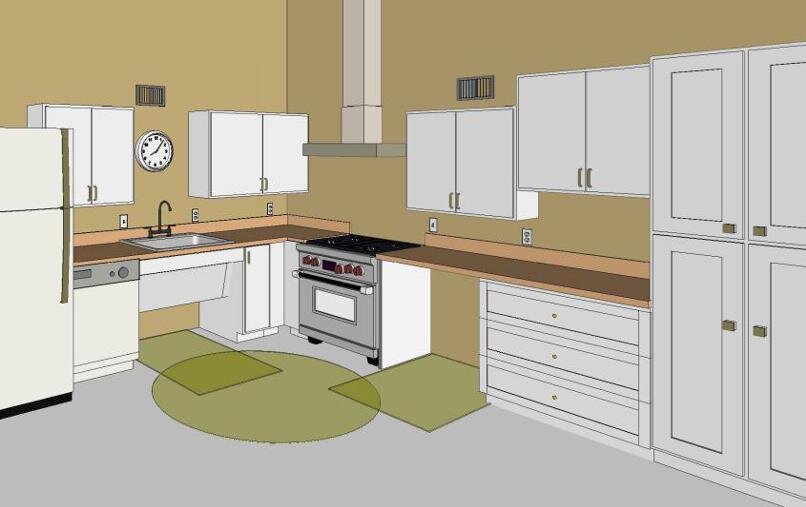 In conclusion, the sink is an essential component of a functional and stylish kitchen. When designing or renovating a kitchen, it's important to consider the
optimal placement, size, and style of the sink
. With the right sink and faucet, you can not only enhance the functionality of your kitchen but also add to its overall design and aesthetic.
In conclusion, the sink is an essential component of a functional and stylish kitchen. When designing or renovating a kitchen, it's important to consider the
optimal placement, size, and style of the sink
. With the right sink and faucet, you can not only enhance the functionality of your kitchen but also add to its overall design and aesthetic.












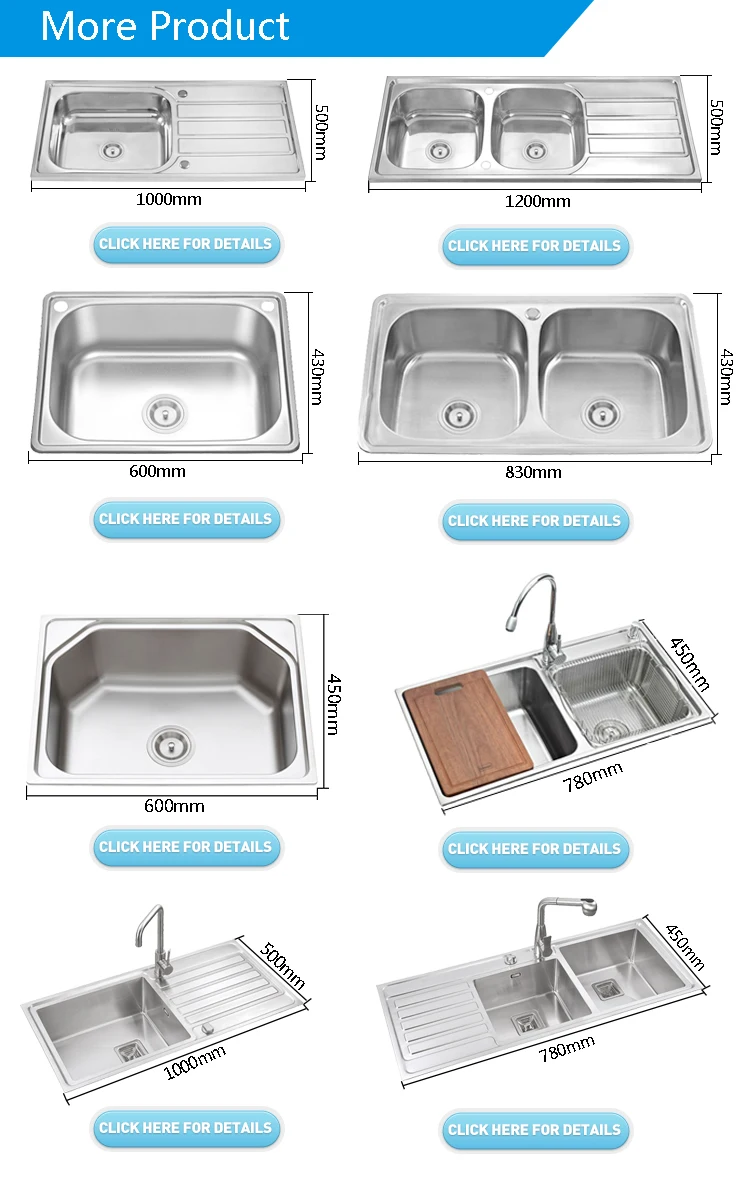




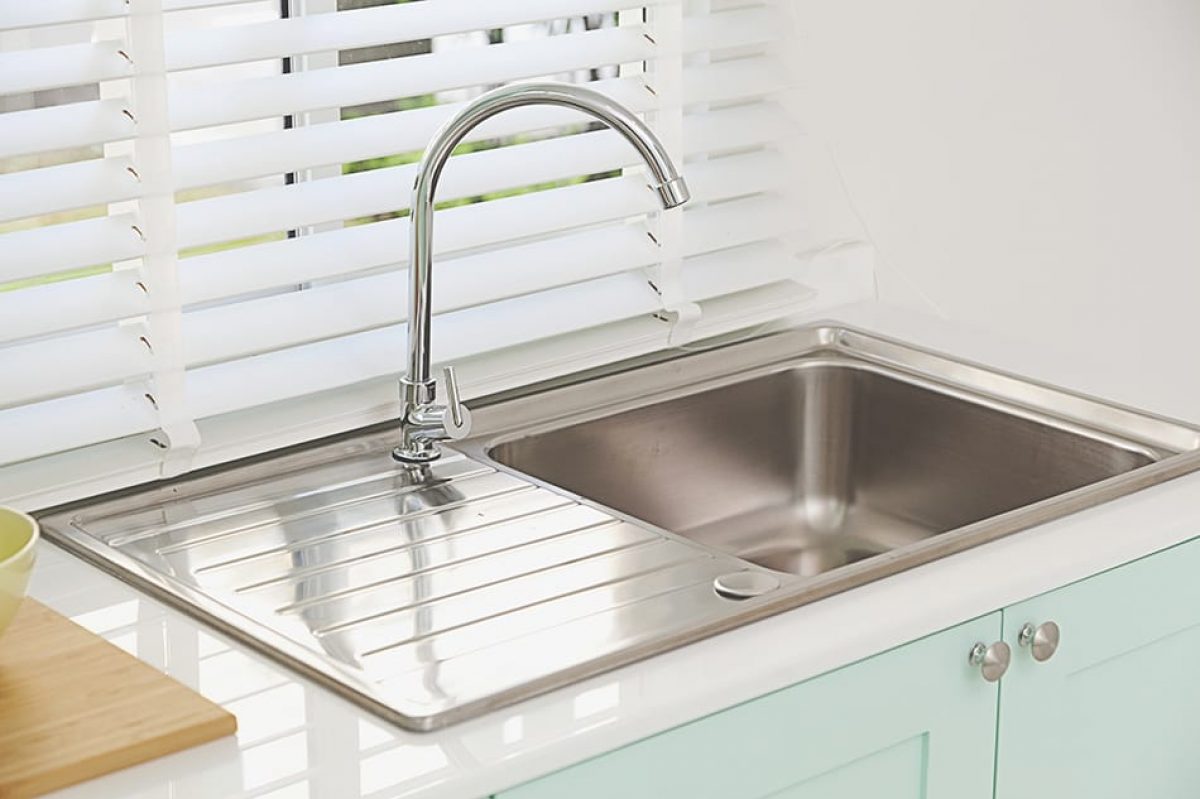
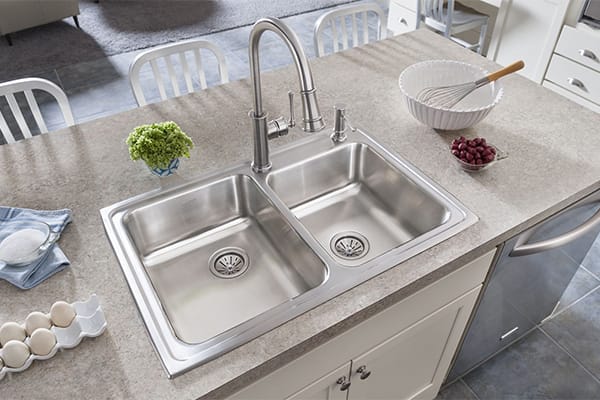
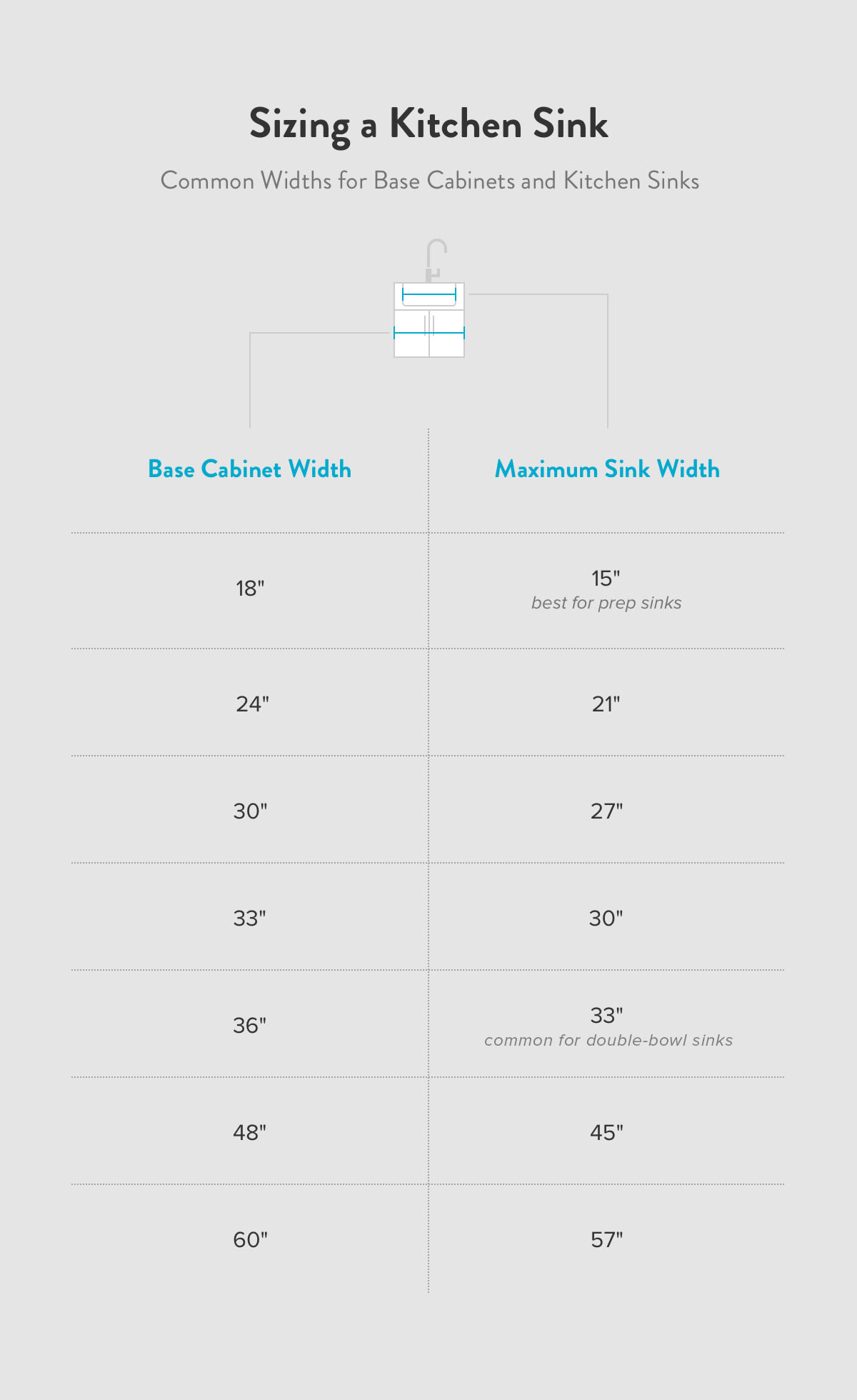
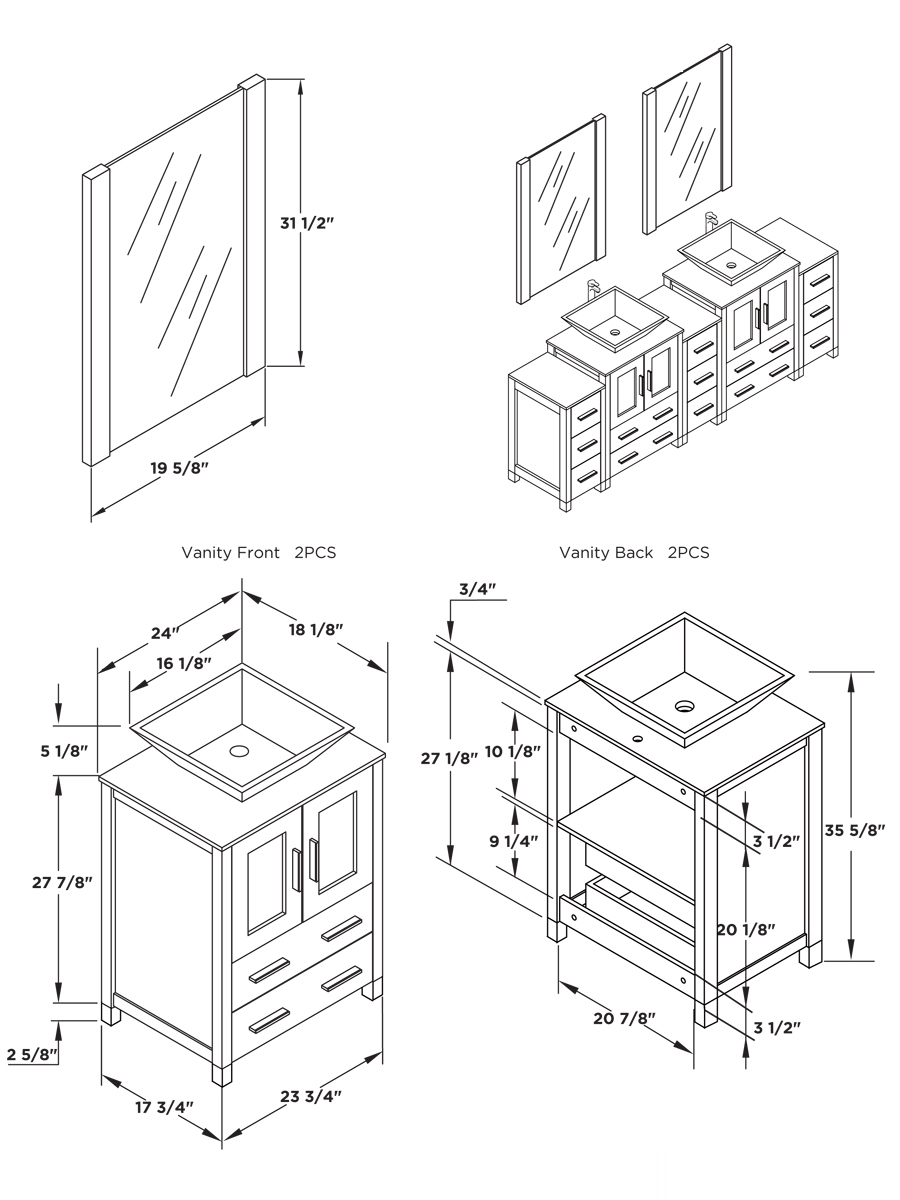


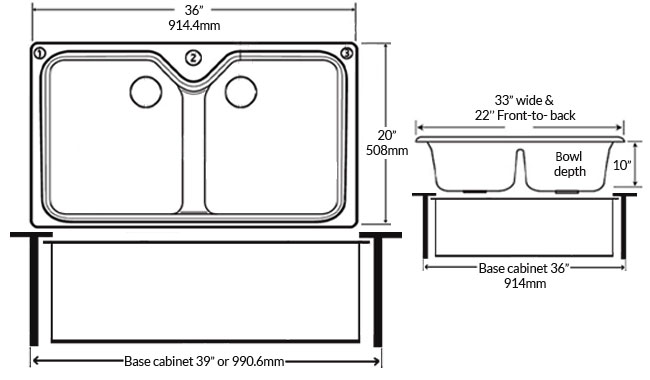







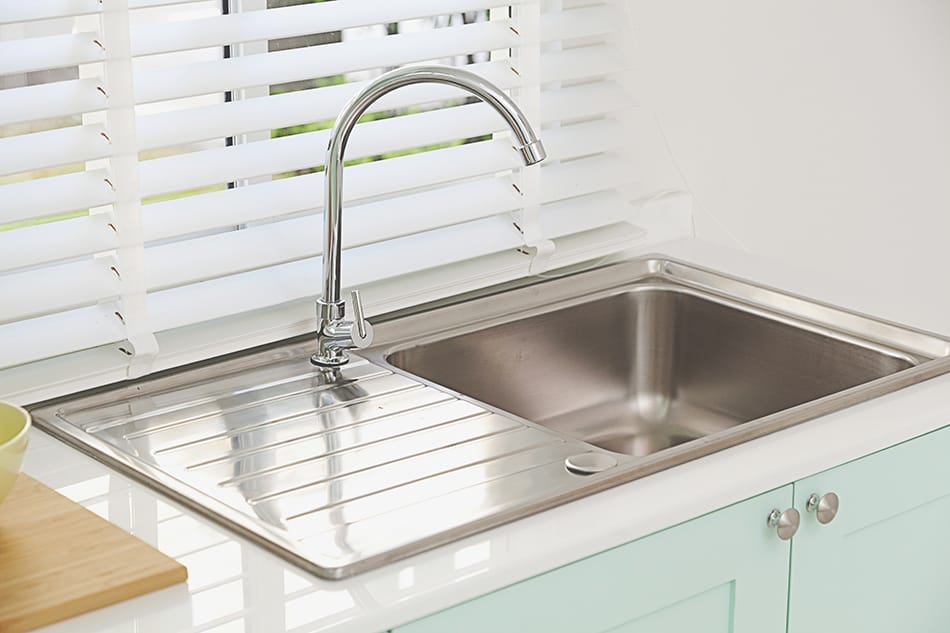




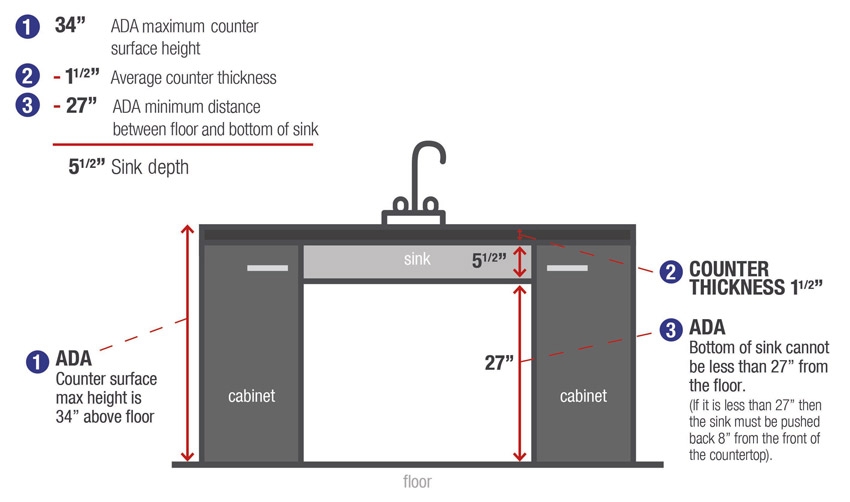





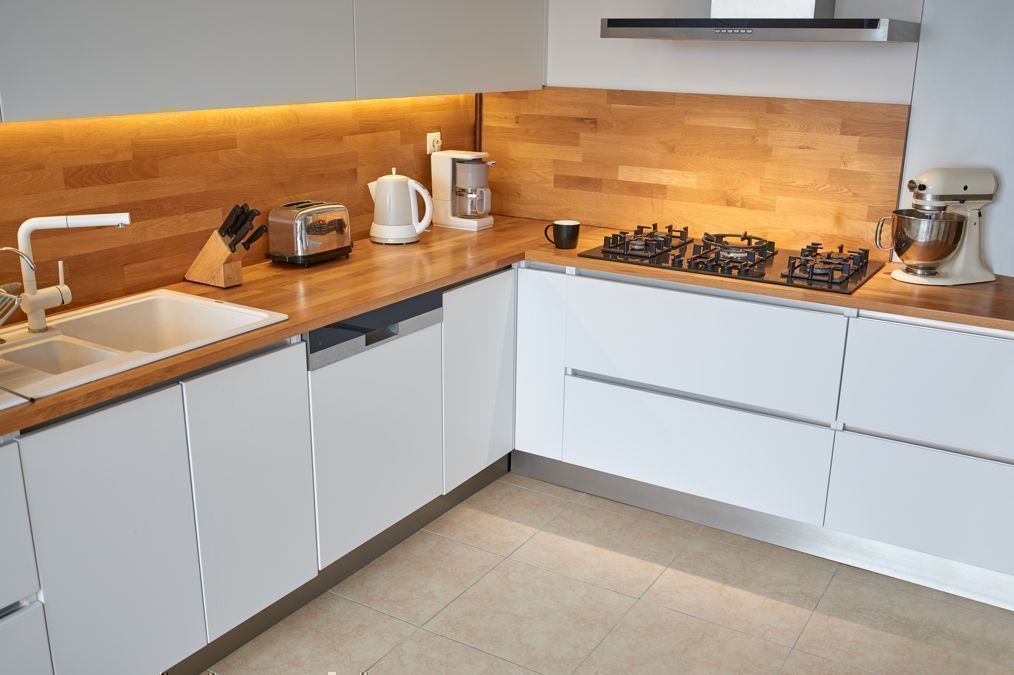


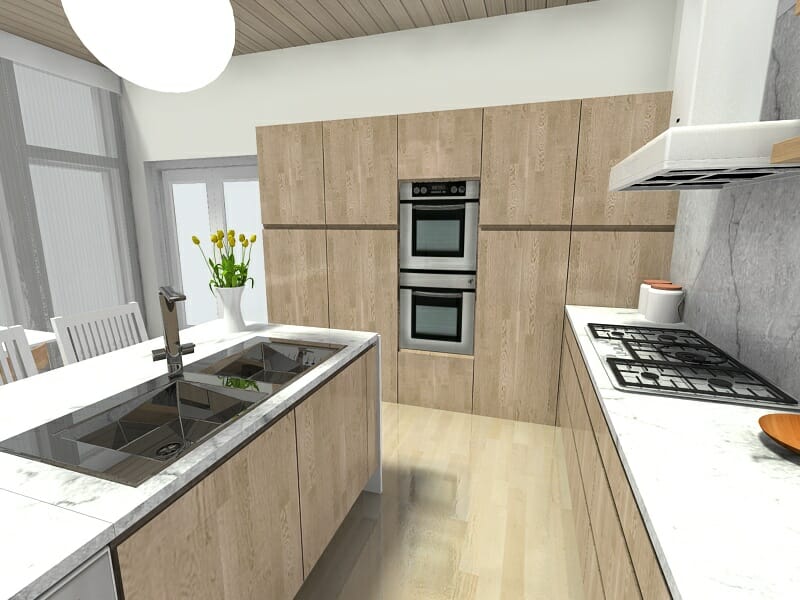
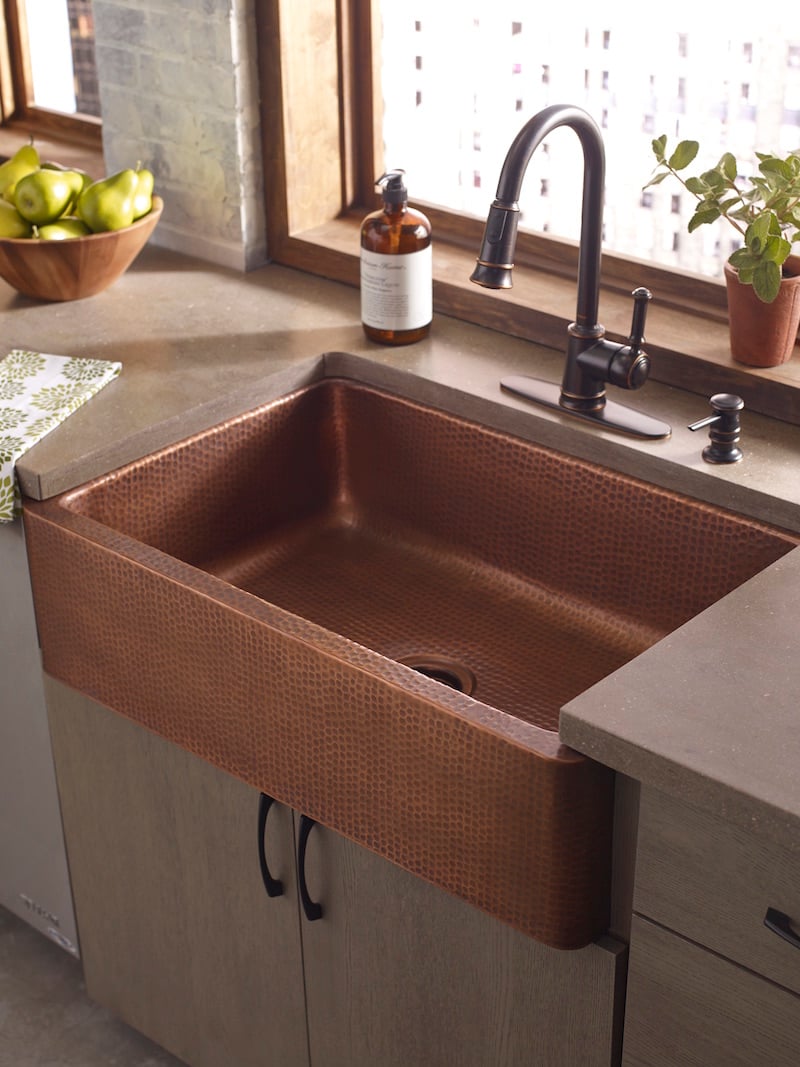


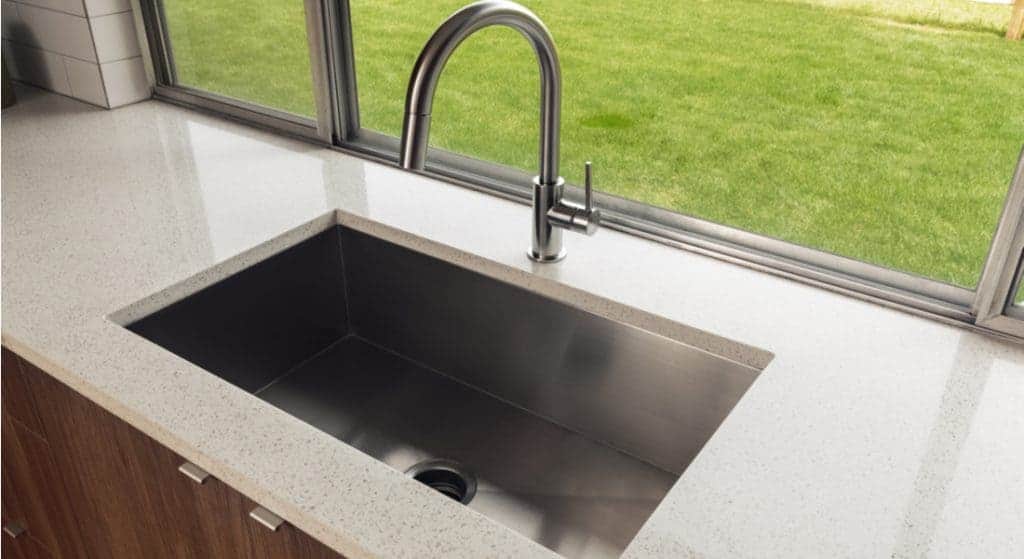

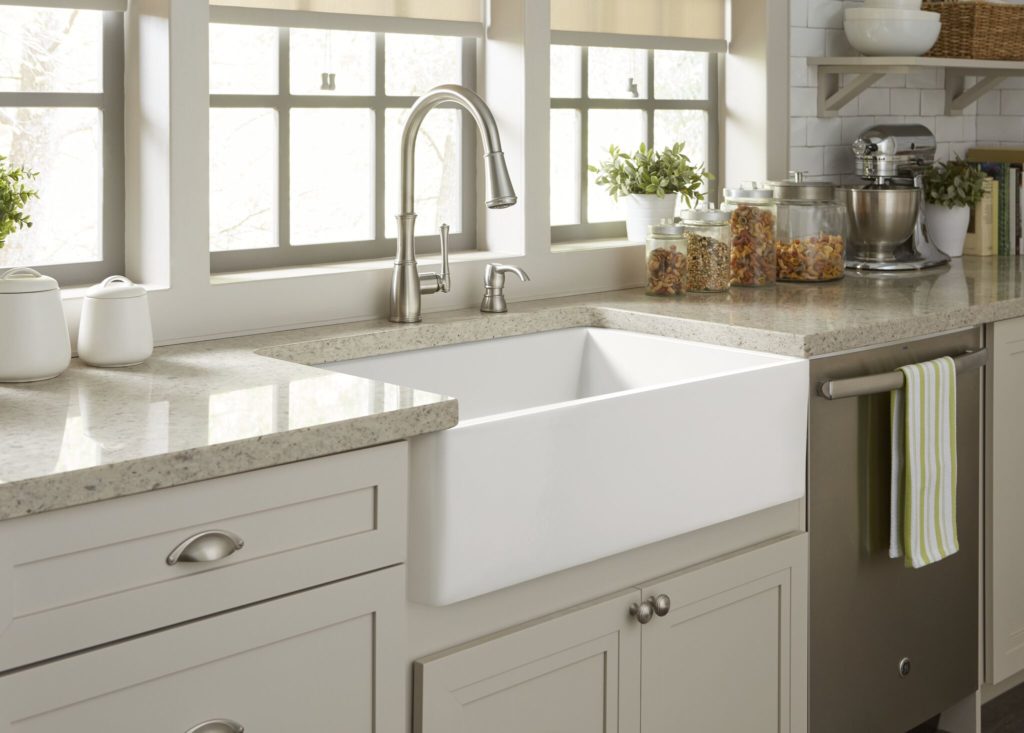

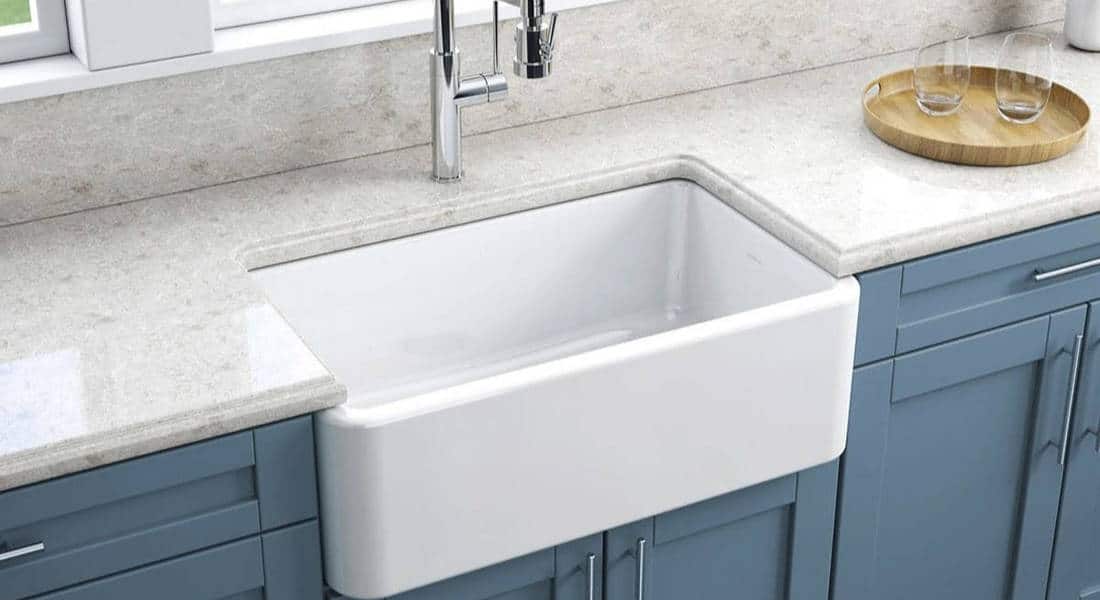

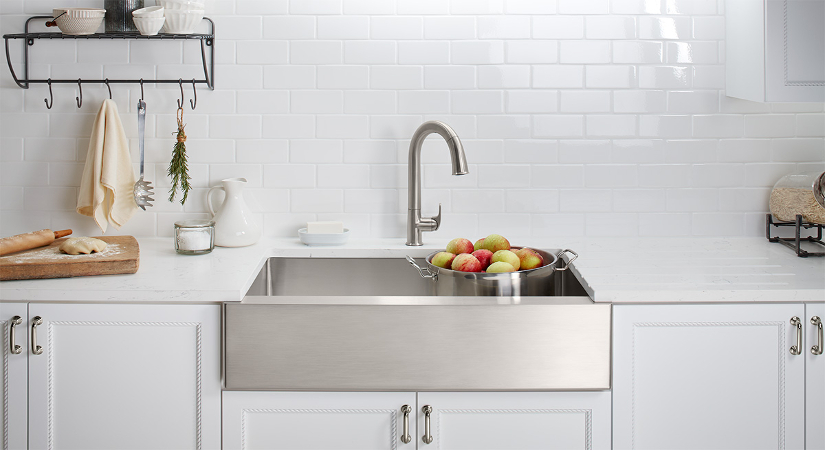
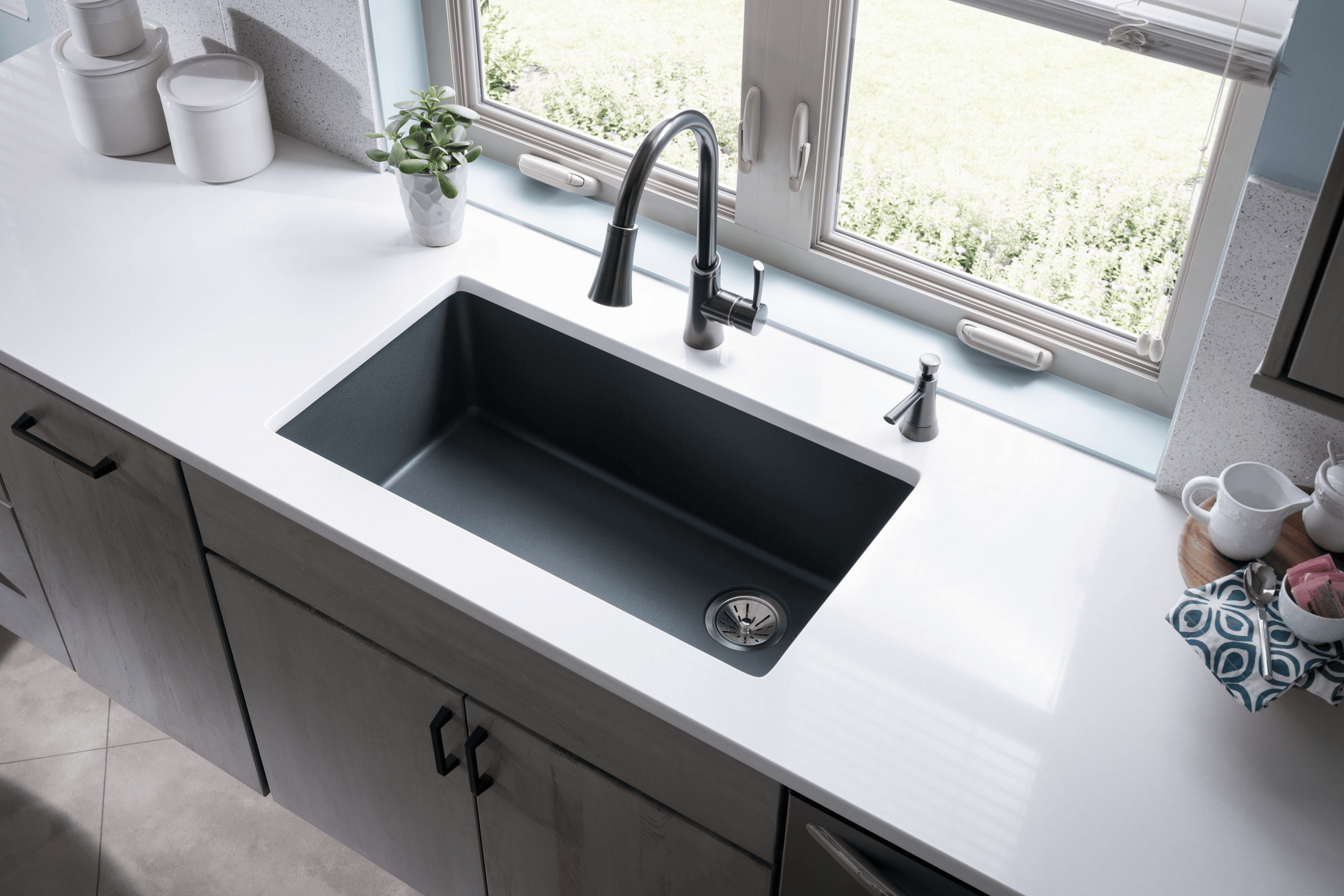
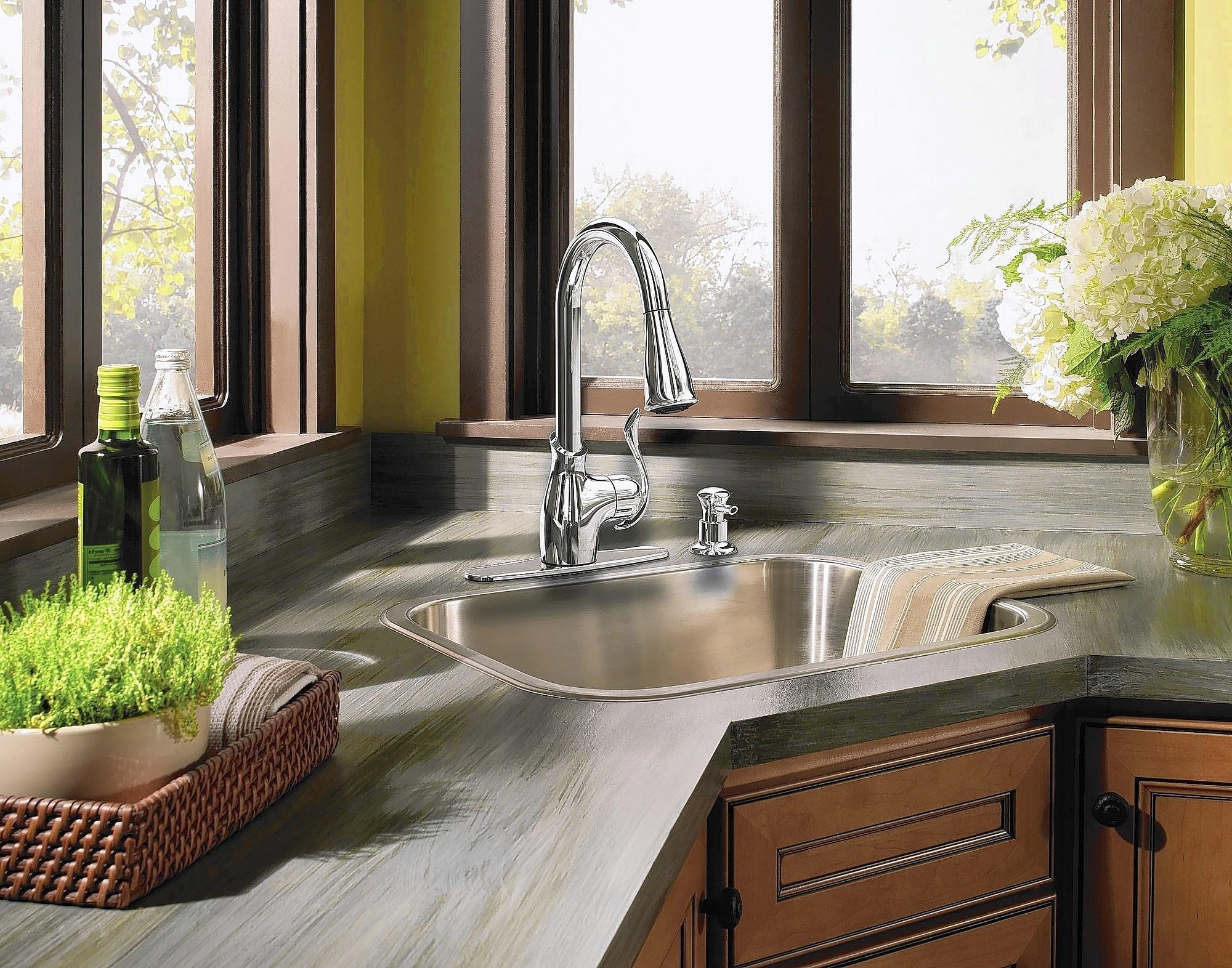
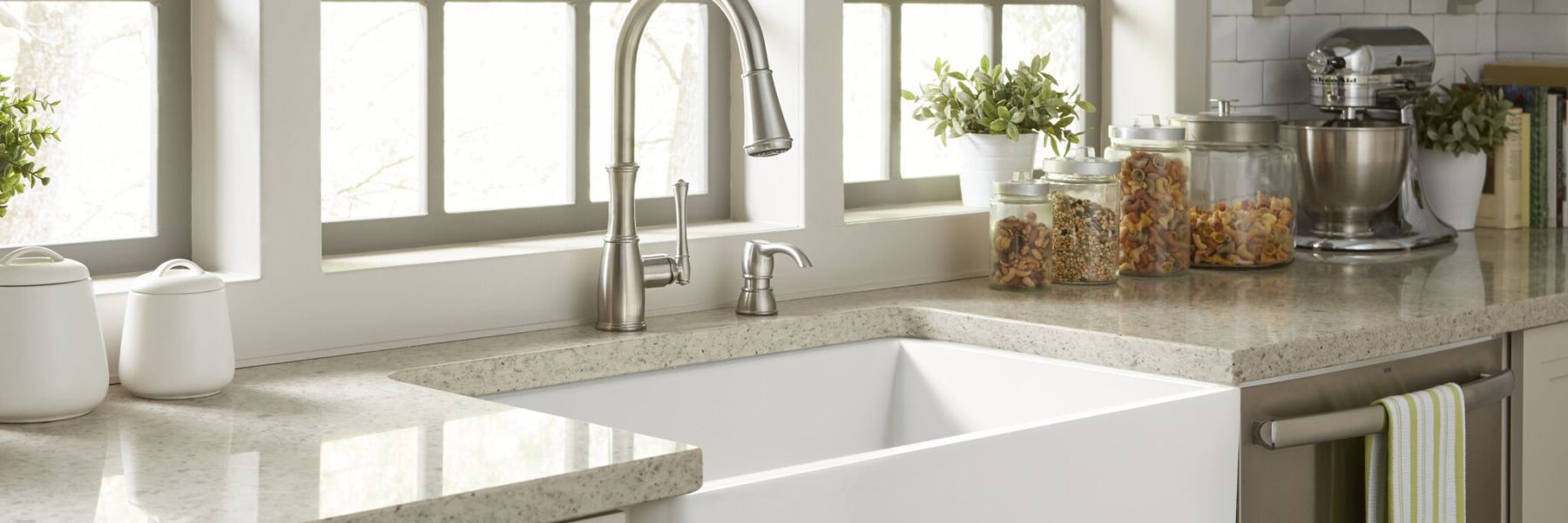

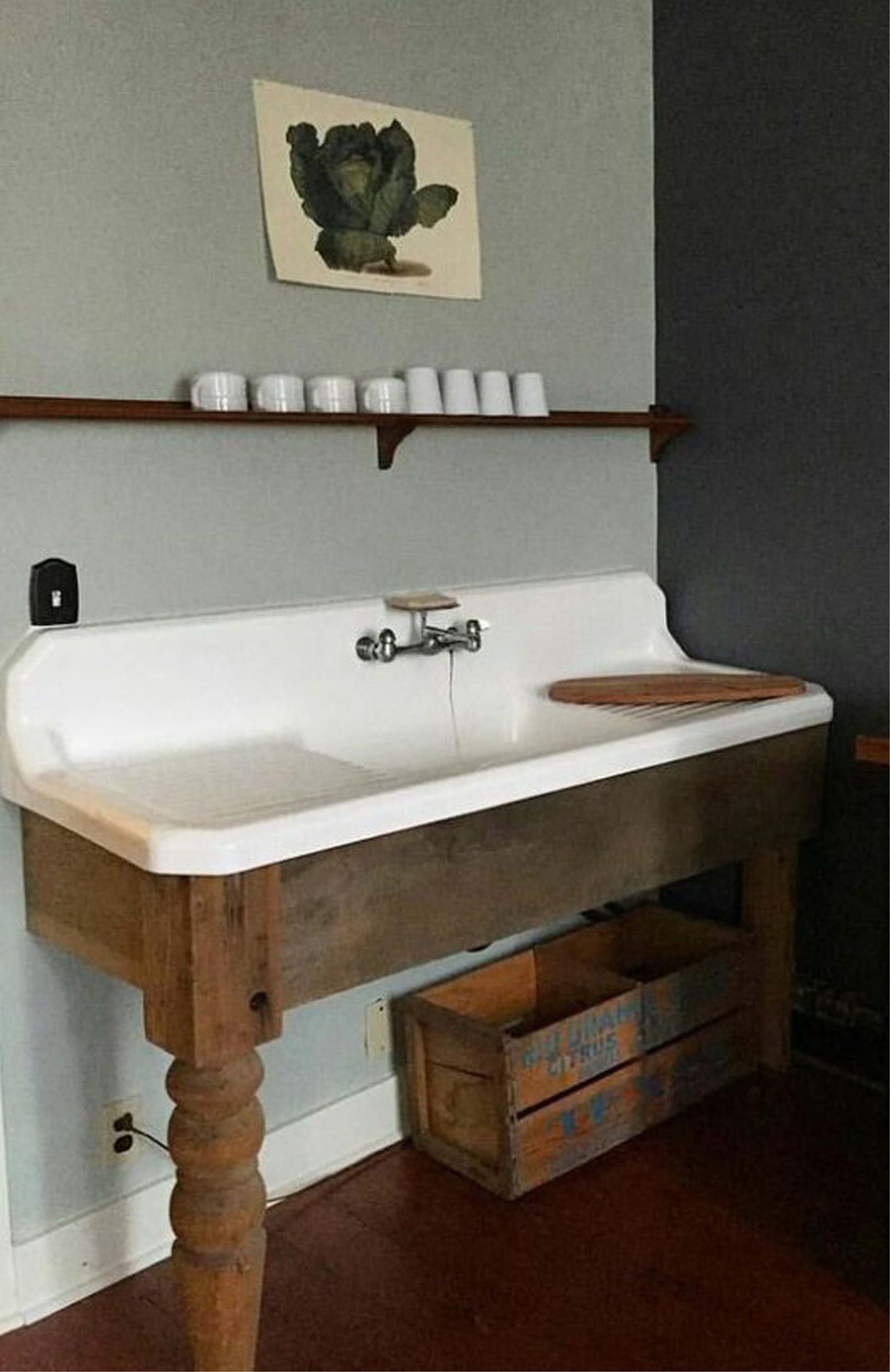


/DrainboardSink-5b05c1f6eb97de0037dd257c.jpg)

